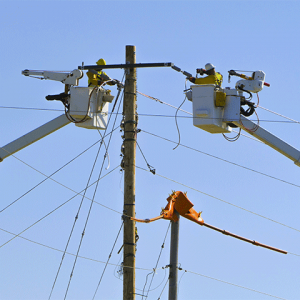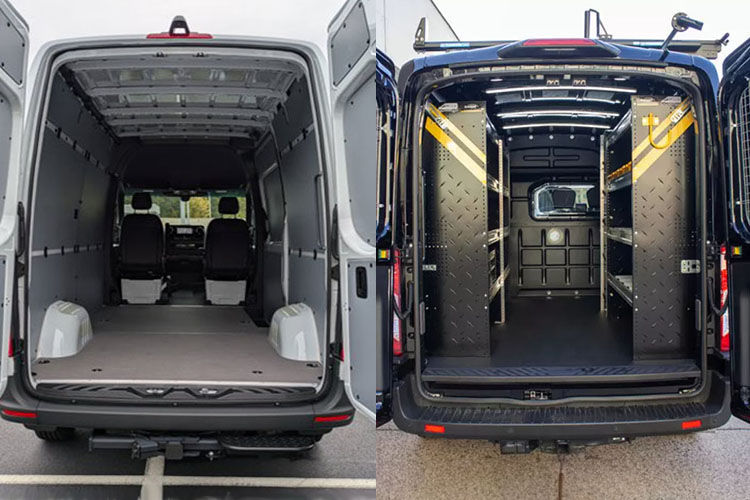5 Features Telecom Contractors Need When Choosing a Work Vehicle


5 Features Telecom Contractors Need When Choosing a Work Vehicle
Telecommunications cabling companies all ultimately serve the same goal, which is building and maintaining the infrastructure that connects our global society. However, the way they get it done can vary quite a bit. The work vehicles they use are a significant tool in getting the work done.
 The two most common types of cabling companies are small-scale companies like RWL Communications, Inc. of Southwest Florida, a Comcast contractor that installs cables for residential properties, and large-scale utility contractors like TeleCable, Inc. of New Jersey, which run the heavy-duty cable between cities and under roadways. It shouldn’t come as a surprise that these two different kinds of cabling companies don’t use the same vehicles. Every commercial vehicle is a specialized tool, and the first step in deciding what vehicle your telecom or cabling company needs is figuring out what types of jobs you’ll be called to do.
The two most common types of cabling companies are small-scale companies like RWL Communications, Inc. of Southwest Florida, a Comcast contractor that installs cables for residential properties, and large-scale utility contractors like TeleCable, Inc. of New Jersey, which run the heavy-duty cable between cities and under roadways. It shouldn’t come as a surprise that these two different kinds of cabling companies don’t use the same vehicles. Every commercial vehicle is a specialized tool, and the first step in deciding what vehicle your telecom or cabling company needs is figuring out what types of jobs you’ll be called to do.
As TeleCable proudly declares on their company website, what sets them apart from their competition is that they’re “all about trucks and people.” The trucks that a company chooses are almost as important as the people it hires. When selecting a truck, a telecom electrician must determine that the truck meets its basic needs: storage for tools and materials, accessibility of the storage, the power to haul heavy equipment to work sites, and whether a bucket lift or ladder rack is best for job accessibility.
- Keep your tools and materials secure with lockable compartment storage.
- If you don’t have a bucket truck, it may be important to have a convenient ladder rack.
- Maximize efficiency and productivity with organizational cabinets and cargo areas.
- If you are hauling heavy equipment, consider the power of your vehicle and if you need a diesel or gasoline engine.
1. Tool Storage on a Telecommunications Truck

A company’s tool storage needs can vary greatly based on the kind of work the company does. For example, TeleCable does a lot of work underground, so they need box trucks to store large air compressors to run jackhammers and horizontal drills.
RWL Communications relies more on hand tools and battery operated tools such as drills. Bron, a technician at RWL Communications, explained that his pickup truck is equipped with a ARE ToolMaster truck cap, which has a separate compartment along the driver’s side that is closed off from the cargo area inside the truck. This separate compartment contains shelves for storing tools like drills, hammers, screwdrivers, wrenches, and extra batteries, just to name a few. This compartment locks with a key to keep tools secure.
2. Material Storage for a Telecom Electrician's Vehicle
Inside the bed of the Bron’s truck sits a WeatherGuard Pack Rat pull-out storage drawer, which occupies the width of the bed and extends four feet into the bed from the tailgate. The storage drawer stands at 13 inches tall, so materials like coiled up cables or metal conduit cable can be laid on top of it. The drawer comes with 24 dividers which makes for a nearly endless combination of compartments for organizing small parts, such as connectors, fittings, wire nuts, switchplates, and spools of electrical tape. The drawer is made of corrosion-resistant steel and comes with a cylinder lock with two keys for extra security. Lastly, the drawer mounts to the inside of the truck which makes it difficult for a burglar to remove.
At TeleCable, the number one material they need is on their job sites is cable – lots of it. All of TeleCable’s trucks are equipped with Rigid pintle hitches to tow specialized trailers carrying wire reel cables. These trailers need to be capable of carrying reels weighing up to 14,000 pounds.
3. Ladder Racks for Telecommunication Vehicles
RWL Communications has equipped Bron’s truck with a Kargo Master EZ Drop Down ladder rack, which features a long detachable lever that allows him to effortlessly lower the ladder from the roof of the truck to the side of the truck in one smooth motion, where it can be easily lifted off of its mounts and put to use.
TeleCable’s trucks, on the other hand, don’t need ladder racks. According to the owner of the company, Jim, the majority of TeleCable’s fleet of trucks is split between their box trucks and their bucket trucks, equipped with Altec AT40M truck bodies.Most of their work is too high to be accessed by a ladder, so bucket lifts are used to raise personnel into the air to perform work safely. If a ladder is needed on a job site, it is stored and carried inside their spacious box truck.
"Every commercial vehicle is a specialized tool, and the first step in deciding what vehicle your telecom or cabling company needs is figuring out what types of jobs you’ll be called to do."
4. Access Needs for Telecom Contractors
Accessing the tools and equipment on a truck is very important. Having easy access can save your workers, and your company, a lot of labor time. TeleCable’s bucket trucks are fitted with Altec AT40M truck bodies which contain seven locking tool cabinets around the outside of the truck, four on the driver’s side and three on the passenger side. These cabinets can be easily accessed by employees on the ground.
At RWL Communications, the truck cap on top of Bron’s truck is fitted with a flip-up door on the passenger side that provides access to the cargo area inside. The back of the truck cap has a flip-up door, above the truck’s tailgate, allowing Bron to access the WeatherGuard Pack Rat storage drawer.
There is one hitch with this set-up, though. Bron explained to us that the front driver’s side area of the cargo area is very hard to reach because the separate compartment prevents access to the cargo area from that side. The inside of the cargo area can only be accessed from the passenger’s side or from the back. The hanging storage compartment and the Pack Rat® drawer create a very narrow space for Bron to try to reach through to access the area on the driver's side, where “stuff falls in all the time.”
5. Weight of Equipment and Supplies on a Telecom Truck
Weight and engine power are significant factors in TeleCable’s decision to purchase their fleet of trucks. Owner Jim told us that most of his trucks are Ford F-550 trucks, with a mix of both gas- and diesel-power engines. Jim’s trucks need to be able to tow heavy machinery such as trenching machines and fully-loaded wire reel trailers, in addition to the tools on-board. These trucks must be capable of hauling this equipment to job sites in the more mountainous regions of northwestern New Jersey and eastern Pennsylvania and maintain highway speeds. For this, TeleCable’s box trucks are all equipped with powerful V10 gasoline engines.
RWL Communications’ trucks are much lighter duty. Bron explained that most of the company’s trucks are Chevrolet Silverado 1500 pickup trucks like the one he is assigned, or Nissan NV Cargo and NV200 vans. All the company’s trucks are two-wheel drive and powered by gasoline engines. The Chevrolet pickups and Nissan NV Cargo vans are rear-wheel drive and have V8 engines, whereas the smaller NV200 vans are front-wheel drive and come with four-cylinder engines. Bron also noted that other RWL Communications’ branches use Chevrolet vans instead of the Nissan vans, which are larger and are equipped with V8 engines.
When you consider the environment your company works in, and the equipment you need to complete your job, you’ll have a better idea of what to look for in a work truck or van. Powerful engines are attractive, but if you don’t need to haul heavy equipment often and you drive long distances between jobs, you could be spending a lot of extra money on fuel.
Published on: August 16, 2019 2026 Commercial Trucks and Vans: What’s New from Ford, GM, and Ram
2026 Commercial Trucks and Vans: What’s New from Ford, GM, and Ram The Value of Work Ethic: Comvoy.com Promotes Mike Rowe's Work Ethic Scholarship Program
The Value of Work Ethic: Comvoy.com Promotes Mike Rowe's Work Ethic Scholarship Program Electrician Vans & Work Trucks Guide
Electrician Vans & Work Trucks Guide How Efficient Upfit Planning Amplifies the ROI of Your Commercial Vehicle Upfit
How Efficient Upfit Planning Amplifies the ROI of Your Commercial Vehicle Upfit Protecting Your Business with the Right Commercial Auto Insurance
Protecting Your Business with the Right Commercial Auto Insurance







